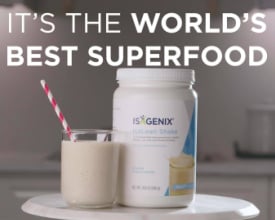Drinking clean water is one of the most critical aspects of human health.
Who hasn’t heard “drink more water” as an answer to just about any health issue?
Pure, germ-free and clean water is indispensable for life.
Every year, millions of people suffer from gastrointestinal infections attached to drinking contaminated water.
That is if the scientific reports by the World Health Organization and Center for Disease Control and Prevention are anything to go by.
When discussing global population health, the quality of water takes center stage.
Ensuring your water is safe for consumption can sometimes be a difficult task.
This is where scientific water purification methods such as reverse osmosis (RO) come in handy.
Reverse osmosis is one of the most effective ways of filtering harmful elements from water.
It is no wonder healthcare professionals highly recommend it.
Filtering water using reverse osmosis delivers pure and fresh drinking water by removing harmful contaminants effectively. But there is skepticism surrounding the safety of reverse osmosis filtered water for drinking needs.
If you have been looking for water filtrations systems, you must have come across information that negatively paints reverse osmosis water.
This article will show you why reverse osmosis filtered water is safe for drinking. But first things first…

What Is Reverse Osmosis?
Reverse osmosis is a process where contaminated water is passed through a semi-permeable membrane for filtration.
The process pushes water through a membrane and exerts sufficient pressure on it to get rid of minerals, large molecules, and impurities.
This system pushes water through tiny pores using pressure.
The reverse osmosis process filters bacteria, minerals, and chemicals through carbon filters and membranes.
The membrane holes only allow water molecules to pass through and traps large molecules in the process.
Ultimately, you will only have pure water.
Reverse osmosis enhances water quality and safety for domestic and industrial use.
Often, it is used for seawater desalination using semipermeable membrane and cross-flow filtration.
The pressure is applied in the process of desalination to overcome osmotic pressure. It is one of the most suitable methods for producing fresh drinking water.
Importance Of Drinking Reverses Osmosis
● Reverse osmosis creates a sustainable source of safe drinking water
● It removes unwanted substances such as zinc, lead, potassium, and iron. This water is suitable for large-scale industrial use.
● It reduces pressure on local water sources.
● Reverse osmosis provides clean and pure water for regions that don’t have freshwater due to infrastructural or financial constraints.

1. Reverse Osmosis Water Contains No Contaminants
Tap water may contain water parasites such as cryptosporidium, which causes stomach pain and other gastrointestinal problem after entering the digestive tract.
Reverse osmosis removes lots of suspended organisms, impurities, bacteria from water, and, lastly, eliminates all molecules of contaminants.
A colossal number of compounds can make water unsafe for drinking. Some of these compounds include manganese, lead, calcium, and iron.
Reverse osmosis is an effective way of eliminating these compounds.
It also contains filters that can remove chlorine from your water, making your water not only safe for drinking but also for industrial use.
Reverse osmosis water is the best purification method for purifying industrial water that requires mineral-free water.
Note: Reverses osmosis removes minerals and other contaminants because they have larger molecules than water. Therefore, you will have compound-free and clean water.
Unlike unfiltered tap water, reverse osmosis water contains few compounds.
In fact, piped water is not safe. There is a high likelihood that it contains lead, especially if the plumbing is dilapidated and old.
By removing lead, reverses osmosis prevents disease such as nerve damage, low fertility, and blood pressure.
It also eliminates the risk of anemia and brain damage in children.
2. Reverse Osmosis Water Is Lead-Free
Drinking water that does not contain lead reduces the risk of developing kidney, liver problems, and high blood pressure.
RO systems eliminate parasites that cause disease through guaranteed filtration.
If you are camping or traveling to an area with a parasite or bacteria-laden water, you will want to use a reverse osmosis system.
The process removes all contaminants and ensures your water is safe for drinking.
Similarly, if you reside in an area that uses pesticides and herbicides heavily, you will want to use reverse osmosis water.
Reverse osmosis removes these contaminants from water, making it safe for drinking.
Similarly, the military uses this technology to purify saltwater.
Reverse osmosis comes in handy during relief efforts and floods.
3. Reverse Osmosis Water Is Sodium-Free
Reverse osmosis water has no sodium. This makes it ideal for people on a low sodium diet.

4. It Is Fresh And Pure
Reverse osmosis removes all impurities leaving you with cleaner and better-tasting water ideal for cooking.
Secondly, the reverse osmosis process is environment-friendly because of the recycling process.
The process does not involve any chemicals.
This water can, therefore, be used for cooking and drinking.
5. Reverse Osmosis Improves The Water Taste
In addition to safety, reverses osmosis water tends to have a better taste than tap water.
Traces of nitrates, sulfur lead, and other compounds make tap water unpalatable.
Removing these molecular compounds ensures that your water s tastier, fresher, and cleaner compared to tap water.

Reverse Osmosis Myths
1. Does Reverse Osmosis remove nutrients in the water?
One of the arguably most significant drawbacks of reverse osmosis water is that it does not contain essential nutrients.
However, regular tap water does not contain essential nutrients either.
The amount of healthy nutrients is very little compared to the massive contaminants contained in unpurified water.
You can make up for the missing nutrients in food or supplements.
The point here is not to expose yourself to colossal contaminants to get a small number of nutrients.
According to the world health organization majority of minerals we require for the body comes from food or dietary supplements.
Besides, some minerals found in water are harmful to human health.
For instance, magnesium and calcium are essential elements in the body.
However, assuming that we can make up for this nutrient deficiency by drinking water is a weak argument.
Tap water contains numerous inorganic minerals that the human body has difficulty absorbing.
The presence of these minerals causes numerous degenerative diseases such as arthritis, kidney stones, glaucoma, hardening arteries, galls stones obesity, cataracts, emphysema, hearing loss, and diabetes.
Minerals found in hard tap water are either absorbed poorly or rejected by cell tissues. If not removed, they may obstruct arteries and internal damages.
Related: Easiest Way To Cleanse Toxins and Lose Weight
2. PH Scale of Reverse Osmosis water
Another issue is the PH level of the reverse osmosis water.
Normal water has a pH scale of 7, which is neutral.
By removing impurities, the pH scale of the water falls below seven, making it acidic.
Also, pure water will tend to attract more CO2, making it even more acidic. But do not fret.
The water pH will return to normal after coming into contact with food in the stomach.
In any case, reverse osmosis water ph will fall to about ph. of 5.5, which is less acidic than stomach acid.
This means that it will have no detrimental effect.
The water pH changes automatically after coming into contact with food in the stomach. Essentially, stomach acid is several times acidic than water.
Also, the body regulates pH Levels regularly.
Therefore it will maintain pH balance at neutral 7.4.
Related: Learn Why You Need A Shower Filter
3. Scientific Alterations
Another common myth is that reverse osmosis water is scientifically altered.
Reverse osmosis is a filtration process, and it does not modify water in any way that would make it unsafe for drinking.
Ideally, reverse osmosis uses high pressure to push water through a film membrane.
The membrane is designed to allow water molecules to pass and trap contaminants.
Ultimately, you will get pure water, in fact, water in its purest form.
While reverse osmosis water is not perfect, it is entirely safe to drink.
4. Remineralization of Reverse Osmosis Water
Although reverse osmosis removes salts and nutrients, it does not mean that they should be avoided.
The solution is adding minerals to the water.
By remineralizing the water, you can still get essential minerals that are beneficial to the body while enjoying contaminant-free water.
First, you can add mineral-rich salt.
Note: You should not use ordinary salt but special sea salt, such as Himalaya sea salt that contains high mineral concentration.
Another simple way involves adding minerals drops into the water.
Also, you can remineralize reverse osmosis water by adding an extra filter into the water.
A pH balancing filter adds some minerals back depending on the pH level of the water.
Lastly, you can use an alkaline pitcher to add minerals and raise the pH level of the water.
Finally
Filtered water is clean, pure, and healthy.
Currently, reverse osmosis is the only technology that can eliminate emerging contaminants such as perchlorate, prescription drugs and other contaminants such as fluoride, arsenic, and cyanide.
These contaminants are difficult to remove using other methods and RO keeps you from ingesting inorganic minerals that are harmful and difficult to absorb.
The bottom line is that the removal of minerals should be the least of your worries because our body absorbs most of the minerals from supplements and foods, and not necessarily from drinking water.
Sources:
https://www.who.int/water_sanitation_health/diseases-risks/diseases/diarrhoea/en/
https://www.uwhealth.org/news/dr-jacqueline-gerhart-theres-good-and-bad-to-using-reverse-osmosis-water-systems/36710
https://www.schultzsoftwater.com/blog/benefits-of-drinking-reverse-osmosis-water
https://apexwaterfilters.com/7-benefits-using-reverse-osmosis-water-filters/
https://www.peninsulawater.com/health-advantages-reverse-osmosis-water-treatment/
http://www.filterwater.com/t-reverse-osmosis-water-and-ph.aspx




